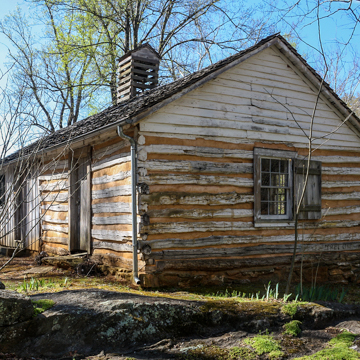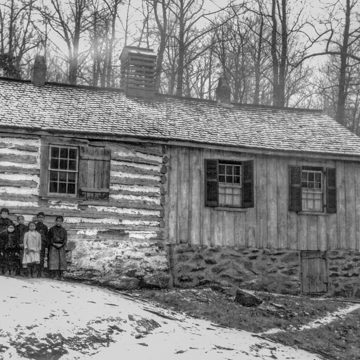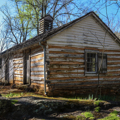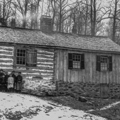You are here
Monacan Ancestral Museum
As Europeans moved into Virginia, most Monacan people, like other Native Americans, were pushed out or killed. Only a few managed to survive in isolated and mountainous regions, as here at Bear Mountain. A log cabin (c. 1870) was built for use as a meeting place and church. Formal education became a major problem for the Monacan. Not accepted at white schools and not wanting to attend black ones, the log cabin also was used as a school and was the only one available until the integration of Amherst's educational system in the 1960s. The V-notched log building, originally one room, received a c. 1930 frame addition and porch.
Services for the Monacan were led by Methodist and Baptist circuit riders until 1908 when St. Paul's Episcopal Church (BD39) in Lynchburg established a mission here and built a church. After that building burned in 1930, it was replaced in 1938 with the current chapel that is similar to the original in its size, style, and orientation. A simple but handsome gable-end frame building, the church has pointed-arched windows, a hood entrance, and a circular window in the front gable. The school and chapel are now part of a small complex of tribal buildings in a beautiful rural setting beside a stream that cascades over huge rocks.
Writing Credits
If SAH Archipedia has been useful to you, please consider supporting it.
SAH Archipedia tells the story of the United States through its buildings, landscapes, and cities. This freely available resource empowers the public with authoritative knowledge that deepens their understanding and appreciation of the built environment. But the Society of Architectural Historians, which created SAH Archipedia with University of Virginia Press, needs your support to maintain the high-caliber research, writing, photography, cartography, editing, design, and programming that make SAH Archipedia a trusted online resource available to all who value the history of place, heritage tourism, and learning.

















